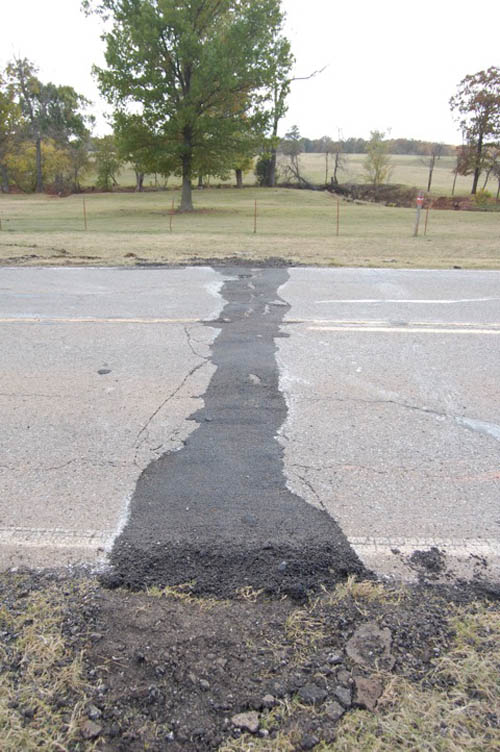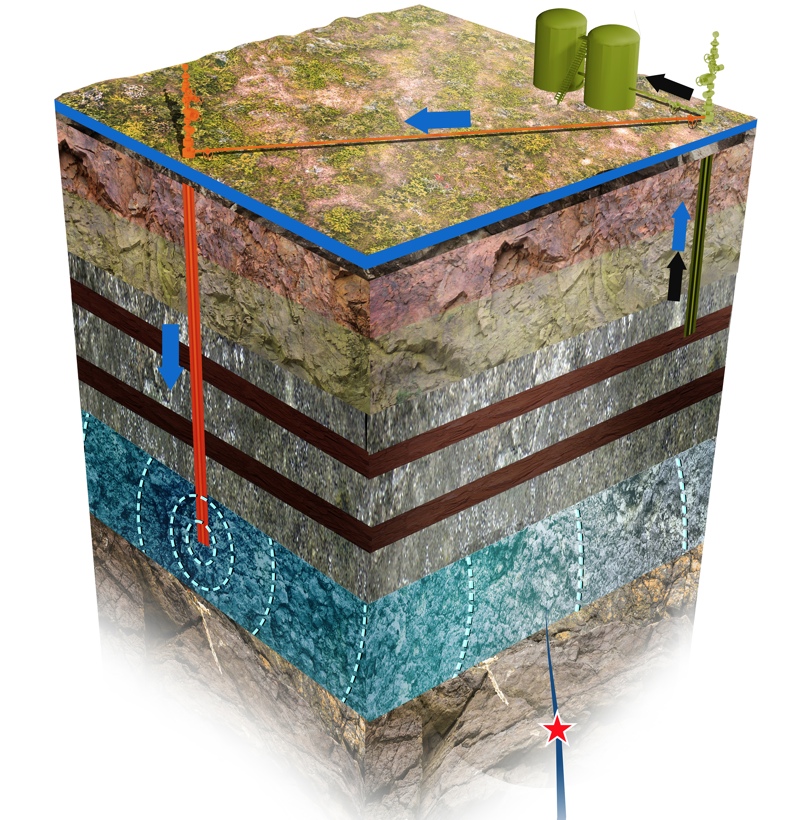Oklahoma's Surge in Earthquakes Due to Oil Production

Oklahoma is not known for its earthquakes, but in recent years episodes of ground shaking have surged, with the U.S. Geological Survey releasing a rare warning last May saying the risk of a damaging earthquake in Oklahoma had significantly increased.
Now scientists say they know why seismic events have taken such a leap in the state: wastewater from oil and gas production that gets injected back into the ground.
But even if companies stop injecting the water into the ground there, the researchers say the man-made earthquakes won't suddenly come to a halt due to a time delay they found between injection and seismic activity.
Before 2008, the Oklahoma experienced one or two magnitude-4 earthquakes per decade, but in 2014 alone, 24 temblors of magnitude 4 or higher shook the state. For smaller earthquakes, the number is even higher — the rate of smaller seismic events has skyrocketed about 200-fold over the past five years. [Watch 2500+ Oklahoma Earthquakes Since 2012 (Video)]
"Seventy percent of the earthquakes in the central U.S. happened in Oklahoma, and that's a huge change to the background rate," said F. Rall Walsh III, a doctoral student in geophysics at the Stanford School of Earth, Energy and Environmental Sciences. "We expect California to have a lot of earthquakes, but not Oklahoma — but now, Oklahoma is having more earthquakes than California."
Researchers were interested in getting to the bottom of what was happening. For many years, one hypothesis was that hydraulic fracturing, or fracking, for oil and gas was the culprit for the increase in earthquake activity.
Walsh and his advisor, Mark Zoback, also of Stanford, found that the quakes were actually caused by pumping salty water into a slippery formation after extracting oil in the conventional way, using vertical wells to pump the oil from deep below.
Get the world’s most fascinating discoveries delivered straight to your inbox.
The researchers looked at three areas of high seismic activity, near the towns of Cherokee, Perry and Jones. The areas account for 8 percent of Oklahoma's land area, but 27 percent of land area used for saltwater disposal — pumping wastewater back into the ground after oil extraction — and 70 percent of the state's earthquakes, explained Walsh. [The 10 Biggest Earthquakes in History]

When oil is pumped up up from deep deposits, it's surrounded by brackish water — almost 50 barrels of water for every barrel of oil produced. All that water has to go somewhere, so companies generally inject the fluid either back into the formation where it was produced or another underground spot. In Oklahoma, much of this water was injected deep into a 7,000-foot-thick (2,100 meters), permeable formation called the Arbuckle, filling in pores within the rocks.
And that's how the earthquakes started, the researchers said.
"It's almost a lubrication. It can push the fault apart," Katie Keranen, a seismologist at Oklahoma University not involved in the current study, previously told Live Science. "When you do that, you lower the stress that's holding a fault together and you can cause it to slip," said Keranen.
Since the 1960s, scientists have been aware that wastewater injection can trigger quakes. In fact, the state's largest earthquake, a magnitude-5.7 temblor in 2011 that could be felt as far away as Milwaukee, has been linked to wastewater injection. Keranen was a co-researcher on the study finding a link between that 2011 quake and wastewater injection. Before that study, scientists didn't realize the injection could cause such large earthquakes. But even after that study, scientists didn't know the practice could cause so many quakes.
All three areas that Zoback and Walsh examined experienced more quakes following increases in wastewater disposal. Three nearby control areas that did not have much wastewater disposal failed to experience increases in the number of quakes.
The ground didn't start rumbling immediately after the wastewater was injected. It can take time — from weeks to months — for the fluid pressure to increase and the fault to slip. Plus, natural earthquakes do occur in Oklahoma, though at a rate of just two to three a year.
"The pressure spreads out, finds a fault and penetrates it to depth," Zoback told Live Science. "The earthquakes are occurring 1 to 2 miles [1.6 to 3.2 kilometers] below the wells, and that's where the faults are and the pressure is triggering the release of already-stored energy."
The researchers suggest a potential remedy: If companies switch practices and inject the water back into the formations that produced the fluid, the pressure would likely stay the same. In his doctoral work, Walsh plans to examine other places where companies could inject water without pressurizing the faults. "The rocks are there, but it's a question of which formation we're injecting into," said Walsh.
Even if a remedy is implemented, Oklahomans should not expect such earthquakes to stop immediately. "They've already injected so much water that the pressure is still spreading throughout the Arbuckle formation," Zoback said in a statement. "The earthquakes won't stop overnight, but they should subside over time."
Zoback also pointed out that people want to know what's going on with the earthquakes — and that scientists are starting to understand the relationship between oil and gas operations and quakes. "We're confident that over time, we're going to be able to help the regulators protect the public health and safety, and manage the risk of triggered seismicity," he said. "We now understand the problem, and we are starting to understand it better and better."
The research was published today (June 18) in the journal Science Advances.
Editor's Note: This article has been updated to reflect the fact that Rall Walsh is a "he."
Follow us @livescience, Facebook & Google+. Original article on Live Science.
